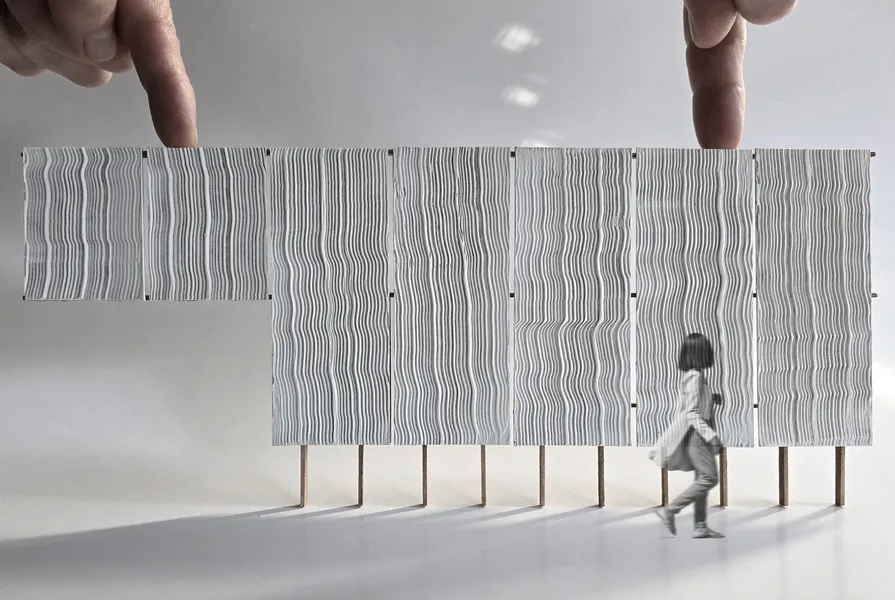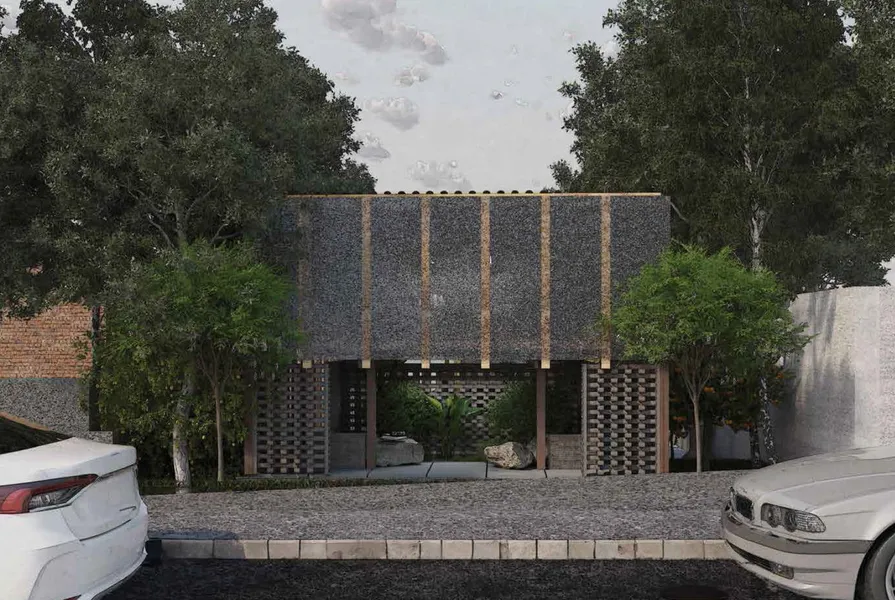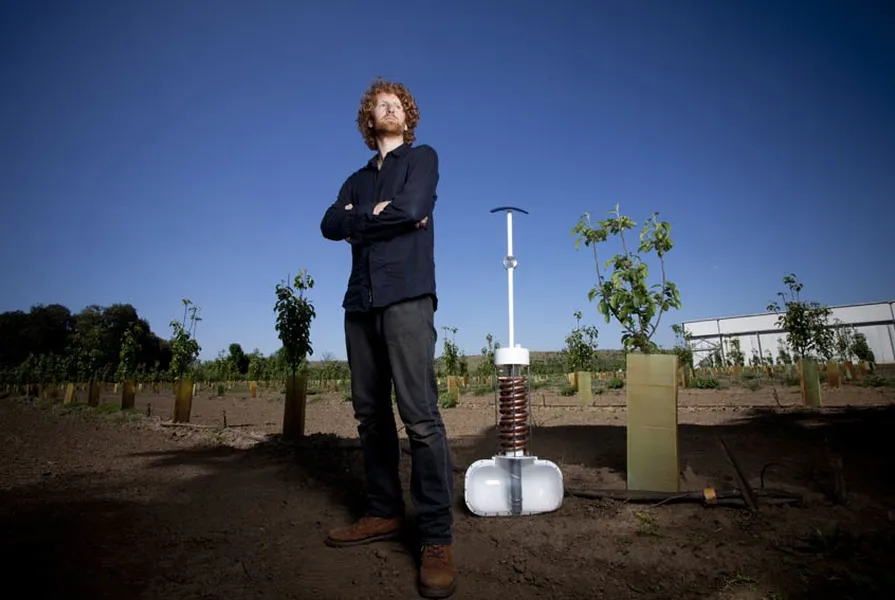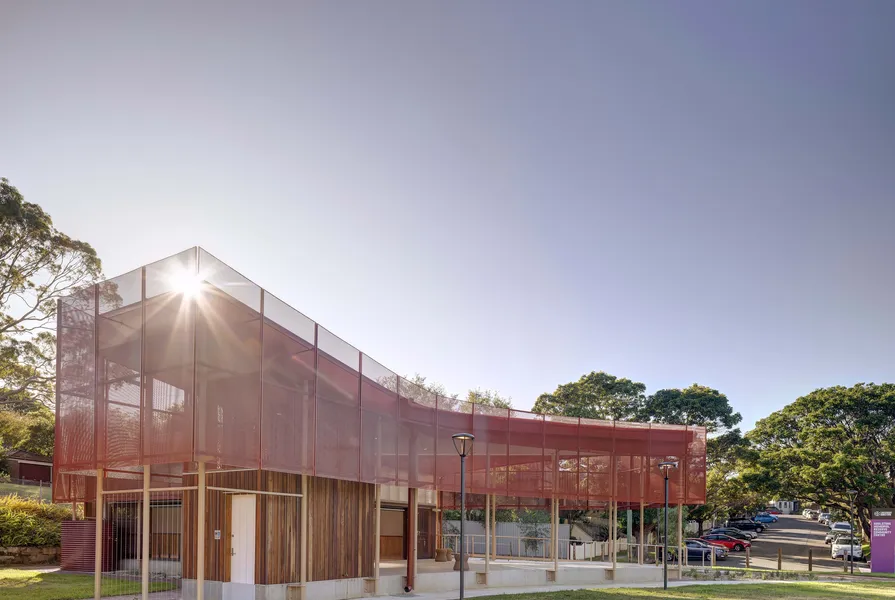- by architectureau
- 15 Mar 2025
First look: Australian proposals shortlisted for 2025 Venice Biennale
Four shortlisted design teams are vying for creative directorship of the Australia Pavilion at the 2025 Venice Architecture Biennale. Here, we share their proposals.
- by architectureau
- 04 Oct 2024
- in architects

Four shortlisted design teams are vying for creative directorship of the Australia Pavilion at the 2025 Venice Architecture Biennale. Here, we share their proposals:
This proposed exhibition explores the human impact on the Australian landscape, focusing on the impact of asbestos in Australia. The display traces the evolution of asbestos, from its rapid ascent as a favoured construction material to its classification as a substance to be avoided and dumped. The title Redux refers to revival and reinterpretation, and in this spirit, the design team stated they aimed to embody "redux" by showcasing new processes for transforming the repudiated material into harmless, carbon-negative-by-products.
Manifesting as a modular display, the installation is designed to be adaptable for re-exhibition. A central exhibition space features large-scale panels raked with former-asbestos mineral render mounted on spotted gum frames, along with tall free-standing columns of blue former-asbestos mineral glaze and scattered seating stools with glazed tops. Additionally, the display will feature maps of asbestos building stock and dump sites.
While Jessica Spresser and Peter Besley are the creative directors behind the proposal, the project also involved contributions from Bill Gammage, Rory Gardiner, Deborah Barnstone, Uma Ketheson, Kleopatra Ananda, Jasmine Sharp, Thomas Li, Asbeter and SDA.
This scheme, as described by the design team, "explores and reveals our increasingly fragile relationship with the experience of home." The proposed exhibition builds on Australian artist Ian Strange's research into the human history of making marks on homes to codify, symbolise and expose precarious housing conditions. Markings can be used to shame, separate or signify that a dwelling is no longer a home and conversely, they can also be co-opted by citizens to urgently bring attention to issues such as sovereignty, homelessness, climate change or conflict.
This curatorial framework of this exhibition revolves around two questions: What can we learn from the human history of markings on houses in relation to our precarious relationship with home? How are Australian architects taking action to respond urgently and with collective intelligence to the housing crisis today?
The exhibition consists of five interconnected parts, including a large-scale marking and light installation on the exterior of the pavilion, a "precarious home" installation, a scaffold structure with curated works by Australian architects responding to housing precarity today, a taxonomy installation of historical markings on houses, and a film contextualising the research.
A New Normal builds on a movement led by architects who are working to transform Australia's cities from being net consumers of energy, waste, and water into net producers by 2030, without any formal request from governments. The national movement originated from a manifesto launched at the National Gallery of Victoria during 2020 Melbourne Design Week. This manifesto inspired a large exhibition of tangible prototypes (several now built) that offered solutions to social and environmental challenges escalated by the built environment.
The exhibition is presented in two parts: in the gallery and in the undercroft of the gallery. The gallery space features a solar battery in the centre of the gallery space that powers a series of short films that tell the story of the architect-led movement and a future where humans have embraced the "new normal." The films are interspersed with tongue-in-cheek fake advertisements which emphasise the immediacy and do-it-yourself spirit of A New Normal. In the undercroft, the project is augmented by other technological elements of A New Normal. This includes: a biogas BBQ to feed people, a rainwater tank to create mist and cool people down, and a composting toilet with a magical view. These elements demystify technology by putting culture at its centre - extending the promotion of A New Normal culture.
An expanded team of advisors provided consultation on this scheme. This advisory team comprised Nigel Bertram, Clare Cousins, Mark Jacques, Patrick Kennedy, Rachel Neeson, Philip Thalis, Kerstin Thompson, and Building 4.0 CRC.
Home by Jack Gillmer, Emily McDaniel and Michael Mossman
This proposal conceptualises the Australia Pavilion as a "home away from home." The exhibition presents physical, interactive, virtual and technological mediums, providing participatory opportunities for visitors and contributors of the project to storytell their understandings of home through the lens of Country. "Located within the context of existing and future colonial infrastructures, our proposal utilises methods to Indigenise place to introduce culturally considered innovations safe for ceremony, imbued of Country," said the design team.
A monumental presence of rammed earth will feature prominently throughout the exhibition, highlighted by a curving rammed earth wall and bench seat designed to facilitate the flow of movement and embrace a sand-filled ceremonial space known as the beating heart. Visitors can choose to contribute by leave their mark and tell their story of home via a "living canvas."
The creative directorial team behind Home were nominated to represent the voice of First Nations design practitioners: Clarence Slockee, Kayle Salvatori, Elle Davidson and Bradley Kerr.
The winning consortium will be revealed on October 10 2024.
- by foxnews
- descember 09, 2016
Rare artifacts representing America's 250th birthday will be featured in major exhibition
Rare artifacts will be featured in the "Give Me Liberty" exhibit at the Virginia Museum of History & Culture in Richmond to commemorate America's upcoming 250th anniversary.
read more





